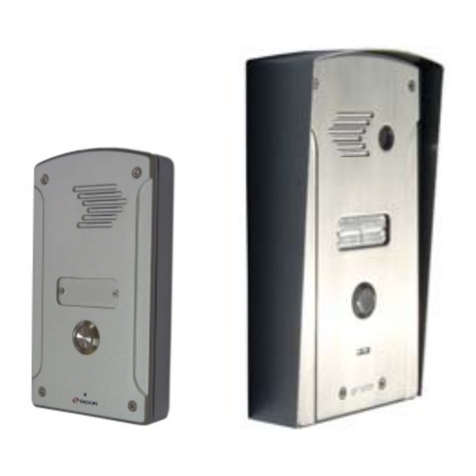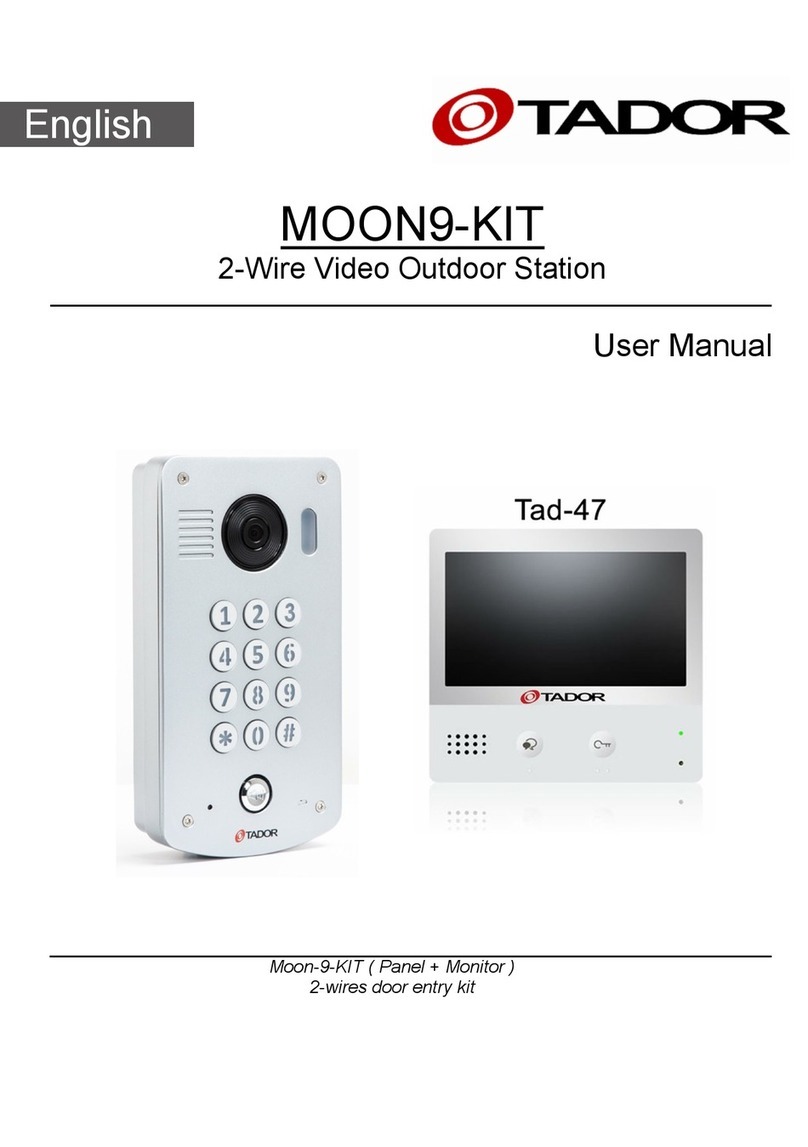8. Camera relay strike –Set the camera relay strike time (play time, default 30 sec).
Example: change the camera uptime to 40 seconds.
Enter remote programming mode, Enter cell number 14, followed by the new value
you want to set 40(two digits), and then press Hash (#) key to approve.
B. Connecting a second lock Instead of Camera
To connect second locks instead of the camera follow the next steps
1. Set the Camera relay strike time (Set in the cell 14, value 00)
2. Set the tone open number (watch page # 6, chapter 9 ).
Set the different opening keys from the extension.
3. Connect the lock's wires between the CAMRA terminals. The opening modes will
"Normally Open" only.
The Opening and Delay times set to the first lock applicable to the second.
Caution: wrong connection might cause irreversible damage to the unit
9. Tone Open Number –These steps will program the tone open number the
key you will press from the PBX telephone to grant entry for the first relay, and the
second if exist (for second lock - see page # 8, part 8, and section 7.2).
One lock mode –Enter the tone open number twice (77)
Example: change the tone open number to 7.
Enter remote programming mode, Enter cell number 13, set the new tone open
number 77(same two digits), and then press Hash (#) key to approve.
Example: change the first tone open number to 7 and the second to 8.
Enter remote programming mode, Enter cell number 13, set the new tone open
number want 78(two digits first digit is for first lock, second digit for the second
lock), and then press Hash (#) key to approve.
10. Pushbutton delay
This is a time that passing after pushbutton pressing to actually lock activation (in
standard situation no need to change). The data located in memory cell 05.
Usually using when pushbutton located far away from the door
Example: Set delay time 3seconds



































